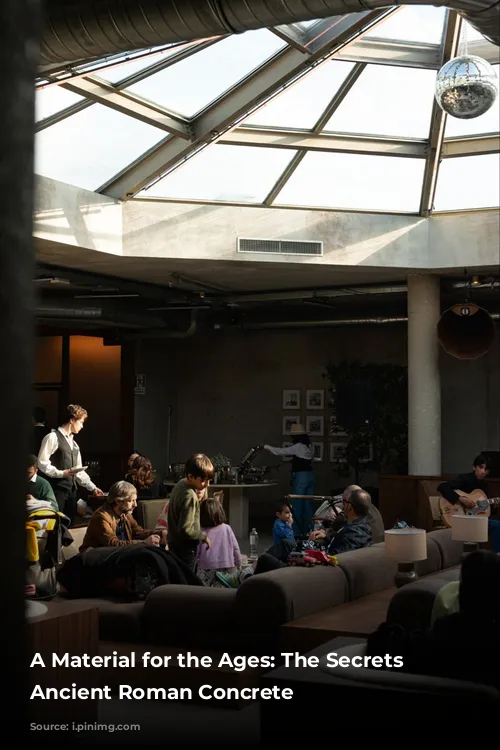Concrete is the most widely used building material today, employed in everything from simple roads to the world’s tallest building, the Burj Khalifa. While the Ancient Romans weren’t the first to discover concrete, they were the first to harness its power on a massive scale, transforming the landscape of their empire.
The Roman Empire: A Legacy Built in Concrete
The Roman civilization, originating in Italy, expanded throughout the Mediterranean, leaving an indelible mark on history. They were pioneers in technology, law, art, and architecture, and their innovations continue to inspire us today. One of their most remarkable contributions was their mastery of concrete.
The Enduring Legacy: Roman Concrete Structures
The Romans utilized their advanced concrete technology to build awe-inspiring structures, such as the Pantheon Dome and the Caesarea Maritima harbor. These structures stand as testaments to the durability and strength of Roman concrete, many surviving for millennia.
The Mystery of Roman Concrete’s Strength
For centuries, the longevity of Roman concrete was a puzzle, but recent research has unveiled the secret. The key ingredient was a unique blend of volcanic ash (Pozzolana), lime, and water. This mixture reacted with seawater, creating a rare crystal called Tobermorite that strengthened the concrete over time.
A Chemical Reaction: Seawater and Tobermorite
The saltwater infiltrating the concrete reacted with the Pozzolana and lime, forming Tobermorite crystals within the cracks. These crystals allowed the concrete to flex and bend rather than shatter under stress, contributing to its exceptional durability.
The Pantheon: A Masterpiece of Roman Concrete
The Pantheon Dome, a magnificent example of Roman concrete architecture, still stands today. Its impressive 142.4-foot diameter dome was a marvel of engineering in its time, and it remains the largest unreinforced concrete dome in the world.
Caesarea Maritima: A Harbor Defiant of Time
The Caesarea Maritima, a port city on the Mediterranean coast, was another testament to Roman concrete engineering. Its massive breakwaters, built to withstand the powerful forces of nature, showcased the adaptability and versatility of Roman concrete.
Lessons from the Past: Reviving Roman Concrete Technology
While Caesarea Maritima eventually succumbed to the forces of nature, the Pantheon Dome continues to inspire awe. Modern scientists are now studying the secrets of Roman concrete to improve the durability of modern concrete, drawing inspiration from a remarkable legacy of engineering and innovation.
Conclusion
The Ancient Romans left behind a lasting legacy in their use of concrete, a testament to their ingenuity and innovation. Their understanding of the chemical interactions between concrete and seawater, leading to the formation of Tobermorite crystals, was a breakthrough in construction technology that continues to fascinate us today. Modern scientists are now working to harness this ancient knowledge, striving to build structures that will stand the test of time, just like the great monuments of the Roman Empire.
